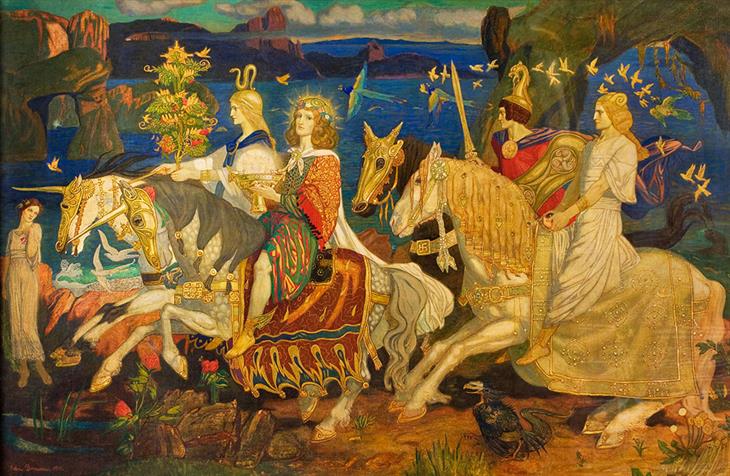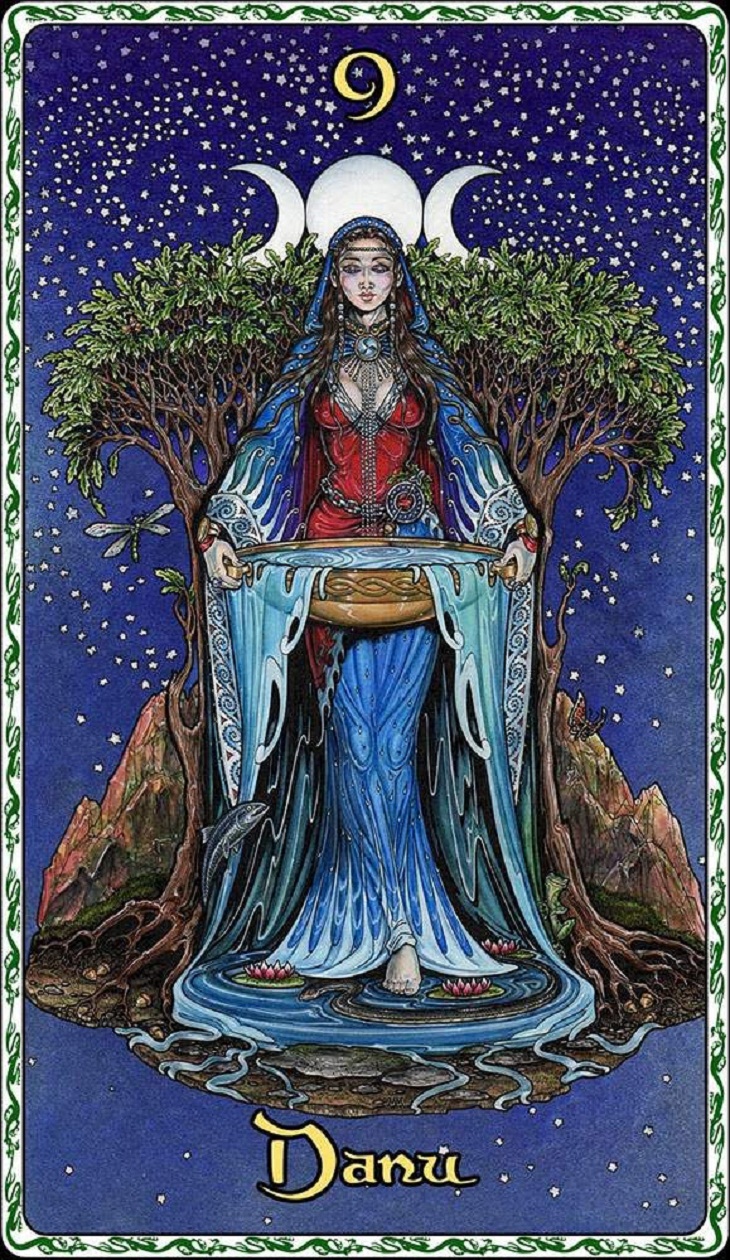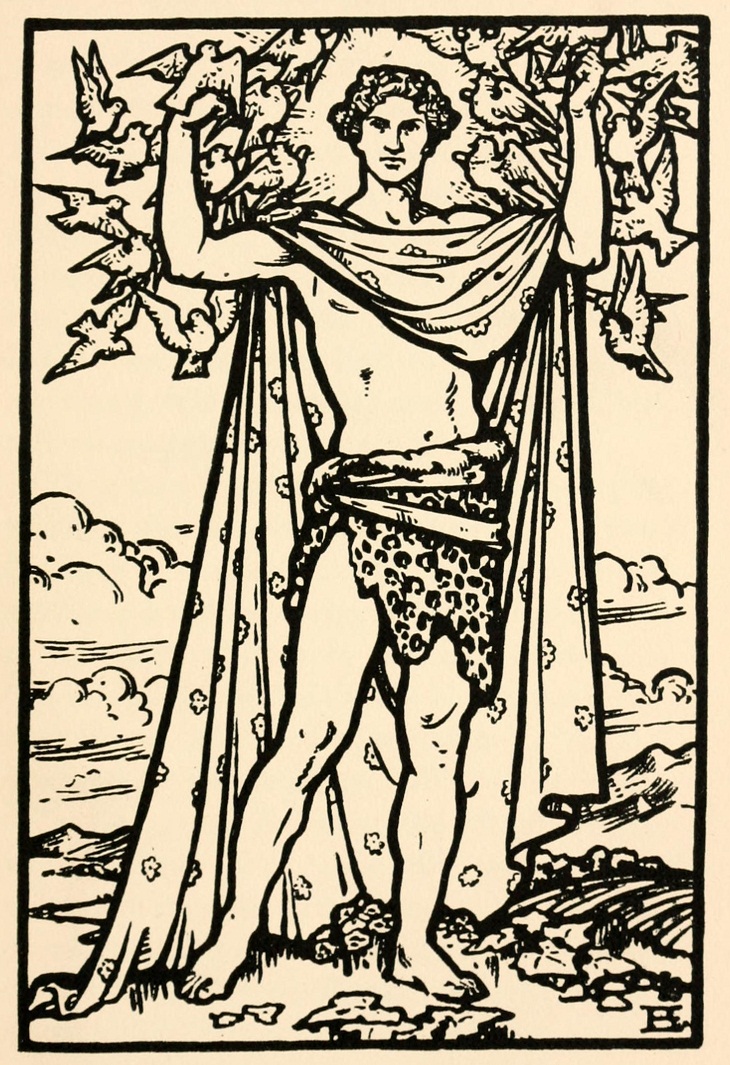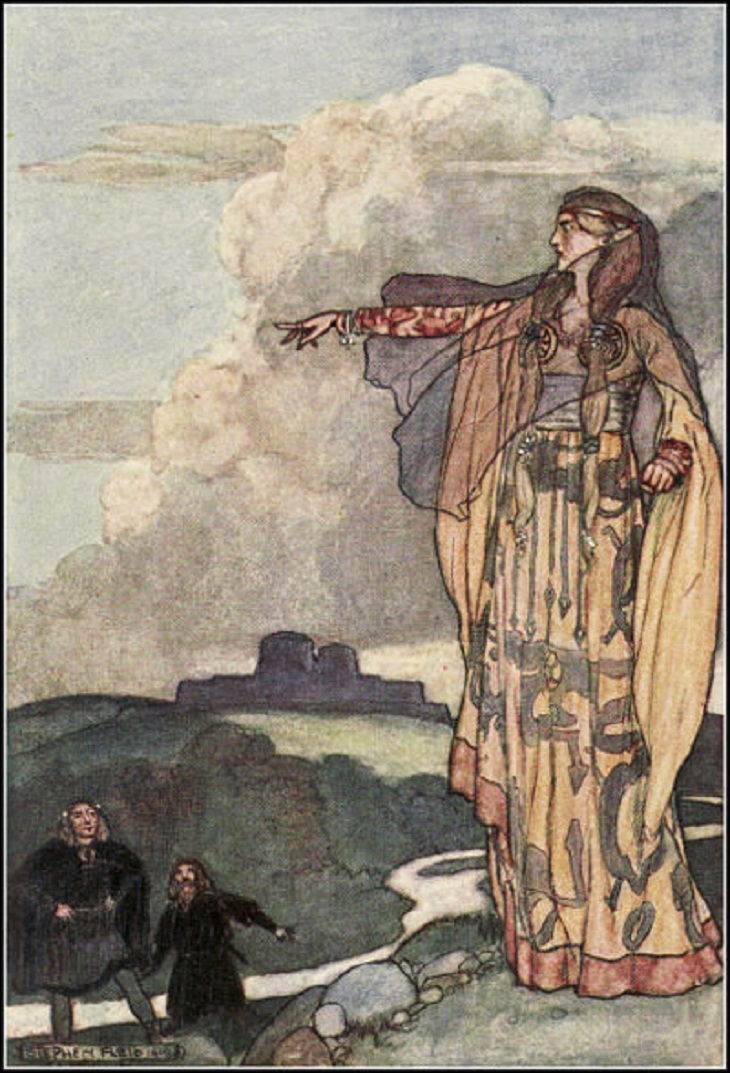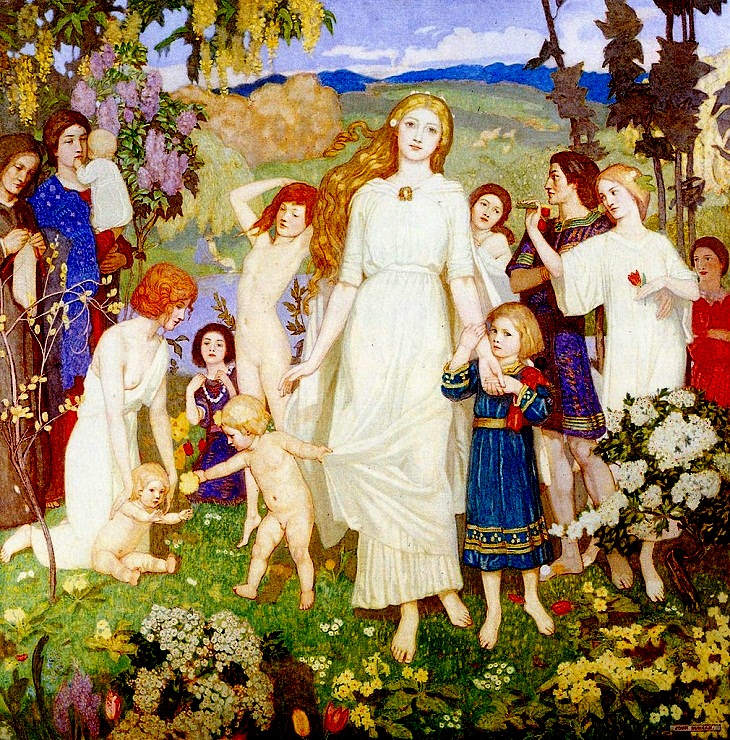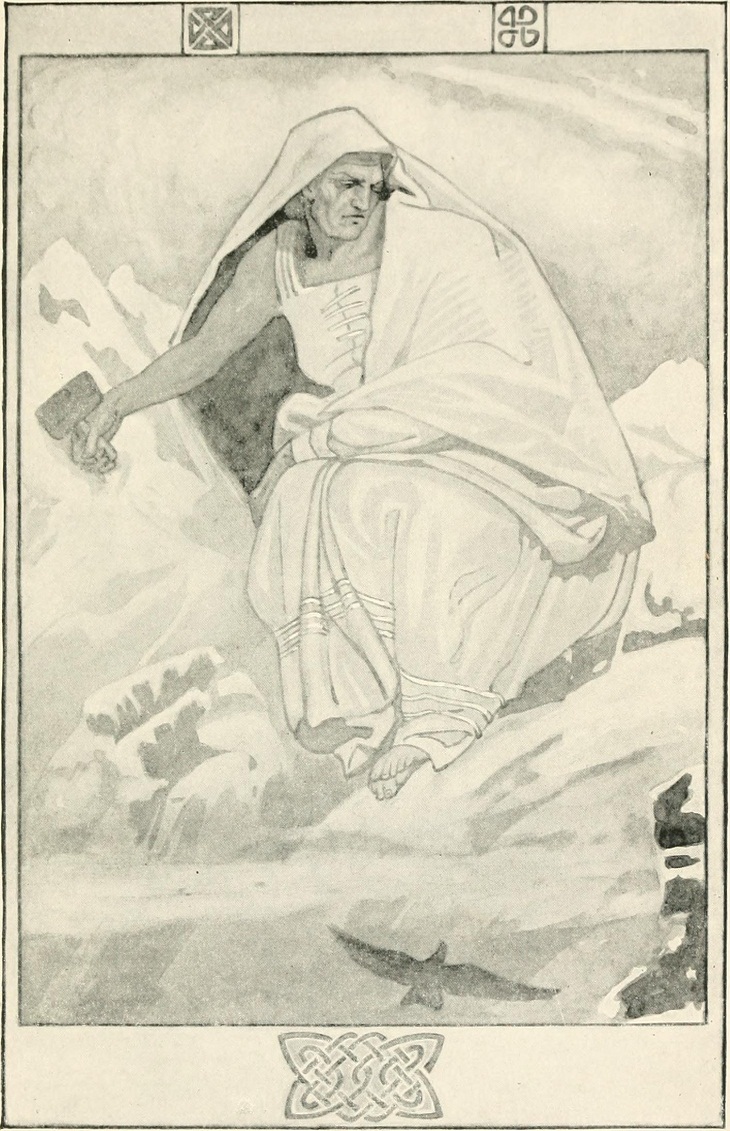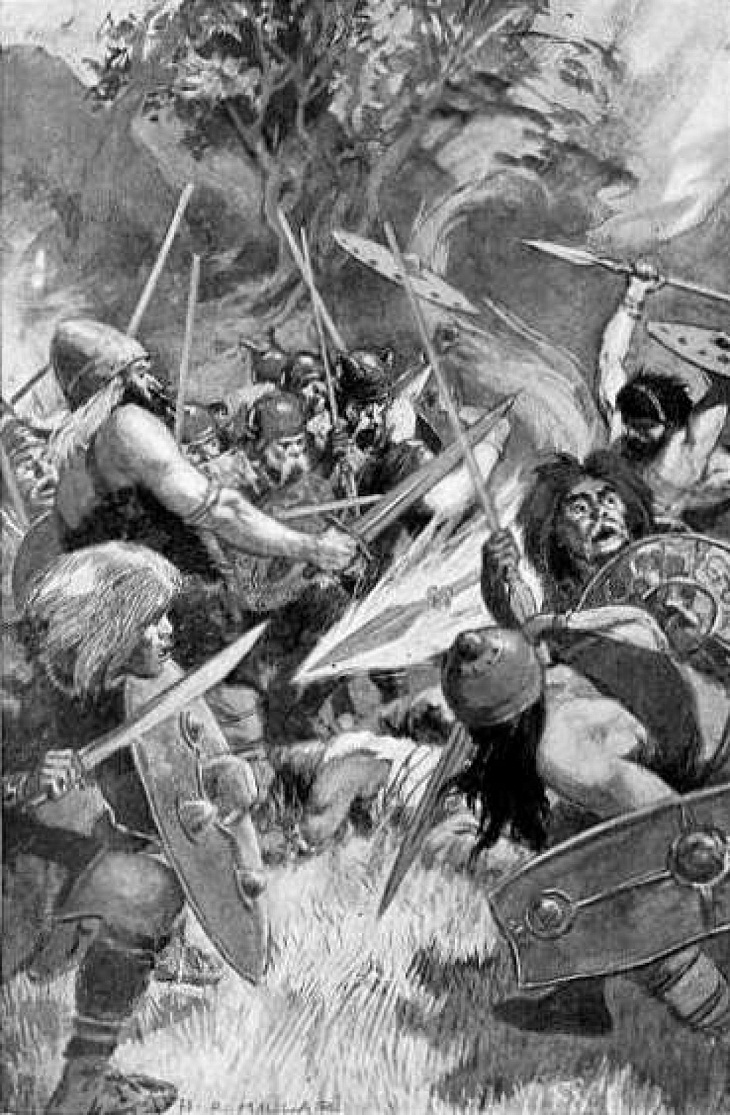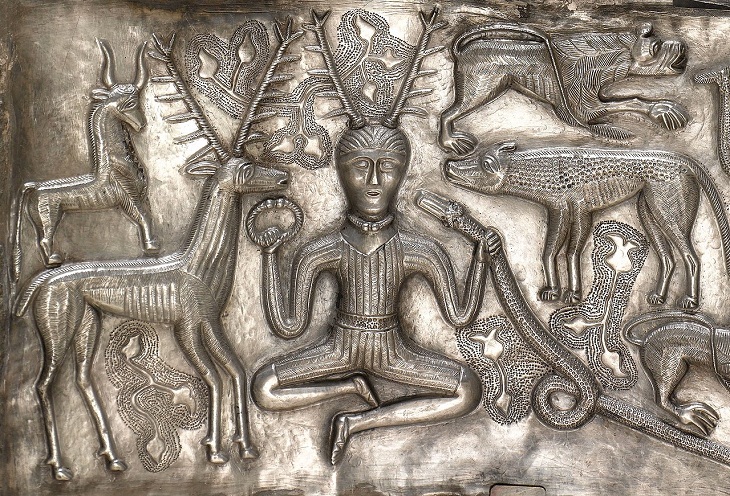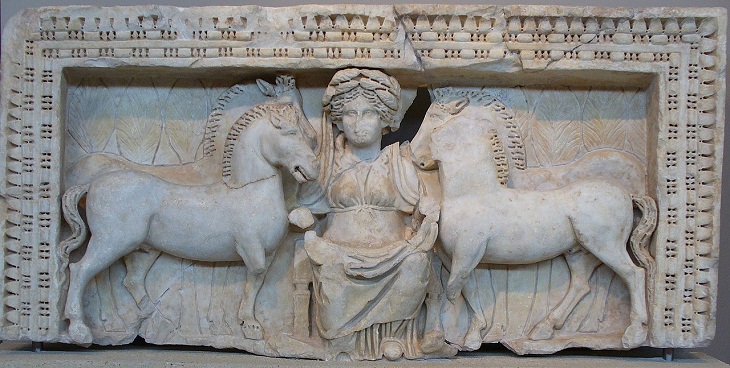The Tuatha Dé Danann as depicted in John Duncan's Riders of the Sidhe (1911) (Image source:
Wikimedia Commons)
Dagda was also famous for his enchanted harp, which he used to control the seasons. The Celtic god's club could both kill and give life. His vast magical cauldron had no bottom.
Dagda was associated with fertility, agriculture, weather, and masculine strength. The ancient Celts relied on him for bountiful harvests and healthy cattle.
2. Danu – The Mother Goddess
Among the oldest ancient Celtic deities is Danu, the "mother goddess." It is said that she was the protective and guardian goddess of the Tuatha Dé Danann tribe, who regarded her as their divine mother.
Danu was the goddess of nature, associated with the process of birth, death, and regeneration. She was also a symbol of abundance, prosperity, and wisdom. According to some historians, Danu could have also been worshipped as the goddess of wind, water, and earth.
While very little is known about Danu's origins, she is considered among the most revered Celtic gods.
3. Aengus – The God of Love
Aengus, illustration by Beatrice Elvery in Violet Russell's Heroes of the Dawn (1914) (Image source:
Wikimedia Commons)
Aengus, whose name means "true vigor," was the son of Dagda and the river goddess Bionn. He was the Celtic god of youth, love, and poetic inspiration. His music was so enticing that it could captivate everyone, whether they were young women, kings, or even his enemies. Aengus was always surrounded by a group of fluttering birds.
Additionally, Aengus was an inspiration to young Celtic lovers because of his intense love for Caer Ibormeith, a girl who was seen by the god in a dream. Upon recognizing his muse as one of the swans, he was able to find and marry her.
4. Morrigan – The Goddess of Death, Discord, and War
The Morrigan, a "Triple Goddess," represented not one person but three sisters - Macha, Nemain, and Badb - who were each responsible for a different facet of war.
The Morrigan could shape-shift into a crow and fly over battlefields, striking fear into enemies or inspiring others. It is said that the Morrígan was of invaluable assistance to Dagda during a great war.
The Morrigan was a particularly frightening divinity since she frequently heralded the impending brutal death of a soldier. She also had the power to influence the result of any battle. In Irish folklore, she became associated with the Banshee.
5. Brigid – The Goddess of Healing
Brigid as depicted in The Coming of Bríde by John Duncan (1917) (Image source:
Wikimedia Commons)
Brigid was the Celtic goddess of healing. She was also related to spring, renewal, fertility, poetry, battle, and crafts. Brigid is the daughter of the Dagda, and thus a member of the Tuatha Dé Danann. Similarly to Morrigan, she was a triple goddess, consisting of three sisters with the same name, each specializing in poetry, healing, and smithing.
Brigid also had interesting connections with domestic animals, such as oxen, sheep, and boars, who were all important to her livelihood and warned her of imminent threats. Brigid was syncretized with the Celtic goddess during the Middle Ages.
6. Taranis – The God of Thunder
Like Thor in Norse mythology, Taranis was a Celtic god of thunder worshipped mostly in Gaul, Hispania, Britain, and Ireland, along with the Rhineland and Danubian provinces. He is usually depicted in Celtic folklore as a bearded man carrying a lightning bolt and a solar wheel. Taranis' wheel was a symbol of cyclic time, representing the rising and setting of the sun. Furthermore, the wheel's eight spokes were related to major Celtic celebrations and festivals.
Wielding the thunderbolt as a weapon, Taranis would command mighty storms that intimidated the people of those times. He was also associated with fire. To please and worship Taranis, many men were frequently sacrificed.
7. Cailleach – The Veiled One
Illustration of Cailleach by John Duncan in Wonder Tales from Scottish Myth and Legend (1917) (Image source:
Wikimedia Commons)
Cailleach, also known as the "Veiled One" or the "Queen of Winter," is one of the more obscure Celtic gods and goddesses. Her powers include controlling the weather and the winds. She usually appears as an old woman in a veiled robe who can leap across mountains, altering their shapes and surroundings. The goddess is considered a destructive force because of her connection with storms and winter.
Cailleach, who was both ageless and immortal, was neither completely virtuous nor completely evil. Throughout the winter, however, she cared for animals. Her favorite animal was the wolf, and she was also said to herd deer.
8. Lugh – The Warrior God
Lugh is among the most well-known and revered Celtic gods. A fierce warrior god, Lugh wielded a sling stone and an invincible magical spear. He was half Tuatha de Danann and half Fomorian (a race of demonic beings in Irish mythology who were bitter rivals of the Tuatha Dé Danann) and is often described as a youthful warrior, king, and craftsman.
In Celtic mythology, Lugh's most famous feat was killing his grandfather Balor, the one-eyed tyrant leader of the Fomorians, and, as a result, leading the Tuatha Dé Danann to victory over their adversaries. Balor had long oppressed the Tuatha Dé Danann, and Lugh finally killed him with a slingshot through his massive, destructive eye.
The courageous warrior god was also known as "Lugh of the Long Arm" because of his spear-wielding skills.
9. Cernunnos - God of the Forest, Animals, and Vegetation
A Cernunnos-type horned god on display at the National Museum of Denmark in Copenhagen (Image source:
Wikimedia Commons)
Cernunnos, or the "Horned One," was the Celtic god of wealth, animals, fertility, and nature. As a symbol of nature, he was often associated with animals, plants, forests, and woodlands. Dogs, stags, and bulls were especially meaningful to him.
Cernunnos usually wears a torc, a huge metal ring, with a stag's antlers adorning his head. He is also given the title "The Lord of Wild Things." To create peace and balance in the universe, he frequently served as a mediator between humans and wild animals.
Cernunnos was associated by Julius Caesar with Dis Pater, the god of the Roman underworld.
10. Epona – Goddess of Horses
Epona, the Celtic goddess of horses, was especially popular among the Roman cavalry, as horses were used both for transportation and for battle. She was the only Celtic goddess to have a temple dedicated to her in Rome. Celtic deities were not commonly inducted into the Roman pantheon, so this was quite unusual.
The Celtic horse goddess was also seen as a protector of donkeys and mules and was usually represented on a white mare. She would be surrounded by ears of grain, foals, and a cornucopia. Due to this, she's associated with fertility and harvests.
According to Celtic mythology, Epona and her horses were supposed to guide the soul to heaven after death.
Share this post with friends and family!

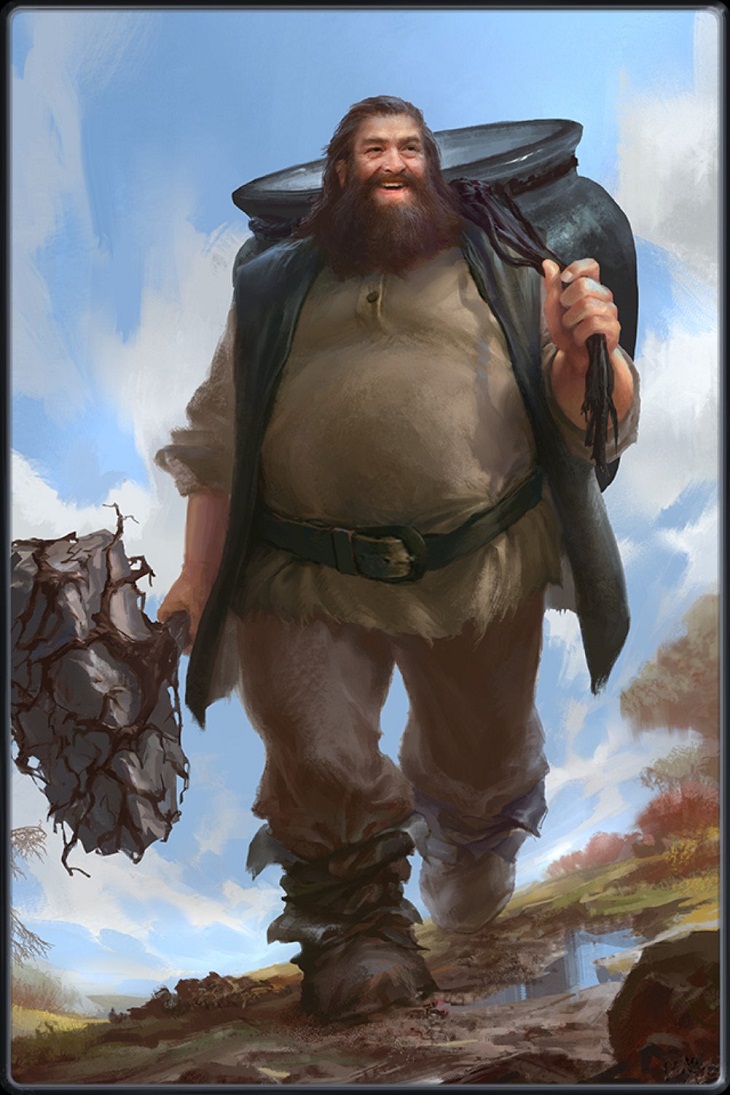 Image source: Irish History Bitesize
Image source: Irish History Bitesize